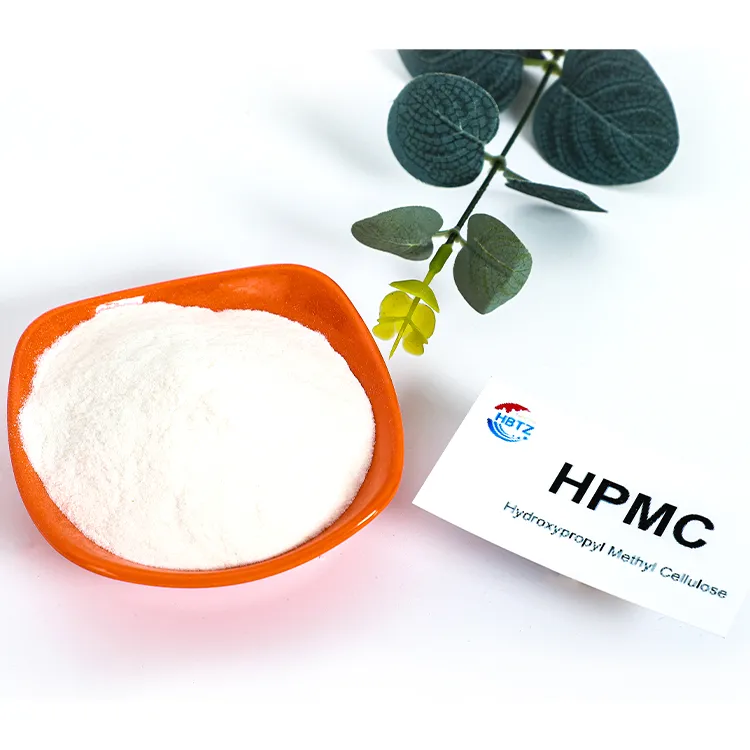
HPMC High-Performance Thickener | Hebei Tangzhi
Hydroxypropyl Methyl Cellulose (HPMC) is a versatile, high-performance multifunctional thickener and stabilizer that plays a critical role in modern industries. As a cellulose ether, HPMC offers exceptional properties such as water retention, film-forming ability, and chemical stability, making it indispensable in construction, pharmaceuticals, food, and daily chemical applications. This article explores the features, advantages, technical specifications, and real-world applications of HPMC, while highlighting the expertise of Hebei Tangzhi Technology Co., Ltd., a leading HPMC supplier in China.

HPMC 00 – A high-purity variant of Hydroxypropyl Methyl Cellulose, ideal for specialized industrial applications.
Understanding Hydroxypropyl Methyl Cellulose (HPMC)
HPMC is a semi-synthetic polymer derived from natural cellulose. Its unique chemical structure combines hydroxypropyl and methyl groups, which enhance its solubility and performance in aqueous environments. This multifunctional additive is prized for its ability to improve the rheological properties of formulations, ensuring consistency and stability in various industries.
According to the National Institute of Standards and Technology (NIST), cellulose-based materials like HPMC are critical for advancing sustainable manufacturing processes. NIST's research on polymer science underscores the importance of precise chemical modifications in achieving optimal material performance (NIST, 2023). HPMC aligns with these principles, offering a balance of functionality and environmental compatibility.
Key Features of HPMC
- Water Retention: HPMC retains moisture in cementitious systems, preventing premature drying and improving workability.
- Viscosity Control: Its molecular structure allows for tailored viscosity levels, adapting to specific application needs.
- Thermal Stability: HPMC maintains integrity under varying temperature conditions, ensuring reliable performance.
- Biocompatibility: Safe for use in pharmaceutical and food-grade formulations, meeting strict regulatory standards.
- Cost-Effectiveness: Offers long-term value by reducing material waste and improving process efficiency.

HPMC Packaging – Designed for durability and ease of use, ensuring product integrity during transportation and storage.
Technical Specifications
| Parameter | Details |
|---|---|
| Chemical Structure | Semi-synthetic cellulose ether with hydroxypropyl and methyl groups |
| Viscosity (2% solution) | Varies from 100 to 15,000 mPa·s (depending on grade) |
| Particle Size | Typically 80–120 mesh |
| pH Range | 6.0–8.0 in aqueous solutions |
| Moisture Content | ≤5% |
| Storage Stability | 12 months in sealed container111s at 15–25°C |
Applications Across Industries
HPMC's adaptability makes it a cornerstone in multiple sectors:
Construction Industry
In mortar, plaster, and tile adhesives, HPMC enhances workability, reduces sagging, and improves adhesion. Its water retention properties ensure consistent curing, even in high-temperature environments. For example, Hebei Tangzhi's HPMC products are widely used in China's construction boom, supporting infrastructure projects and residential developments.
Pharmaceuticals
HPMC acts as a binding agent, disintegrant, and coating material in tablet formulations. Its biocompatibility and non-toxicity make it ideal for drug delivery systems. According to NIST's guidelines on pharmaceutical excipients, HPMC is a preferred choice for its predictable behavior in dissolution studies (NIST, 2022).
Food Industry
In baking, dairy, and confectionery, HPMC functions as a stabilizer and emulsifier. It prevents separation in sauces and improves texture in low-fat products. For instance, Hebei Tangzhi's food-grade HPMC complies with FDA and EU food safety regulations, ensuring global market access.
Daily Chemicals
HPMC is a key ingredient in shampoos, toothpaste, and cleansers, where it provides viscosity control and film-forming properties. Its non-irritating nature makes it suitable for sensitive skin formulations.
Why Choose Hebei Tangzhi Technology Co., Ltd.?
As a China HPMC factory with over a decade of experience, Hebei Tangzhi combines advanced manufacturing with rigorous quality control. The company's commitment to innovation is reflected in its HPMC suppliers network, which ensures competitive HPMC price and reliable HPMC for sale solutions.
Hebei Tangzhi's facilities adhere to ISO 9001 and ISO 14001 standards, guaranteeing environmentally responsible production. Their R&D team continuously develops new HPMC grades to meet evolving industry demands, such as low-temperature stability and high-purity formulations.
For businesses seeking a trusted HPMC supplier, Hebei Tangzhi offers customized solutions and 24/7 customer support. Visit their product page to explore their full range of HPMC products.
Authoritative Citations
1. National Institute of Standards and Technology (NIST). (2023). Polymer Science and Materials Research. Retrieved from https://www.nist.gov
2. NIST. (2022). Guidelines for Pharmaceutical Excipients. Retrieved from https://www.nist.gov
Conclusion
Hydroxypropyl Methyl Cellulose (HPMC) is a cornerstone of modern industrial applications, offering unmatched versatility and performance. Whether in construction, pharmaceuticals, food, or daily chemicals, HPMC's unique properties drive innovation and efficiency. With Hebei Tangzhi Technology Co., Ltd. as a reliable HPMC supplier, businesses can access high-quality, cost-effective solutions tailored to their needs.
For more information, visit Hebei Tangzhi's official website or contact their team to discuss your specific requirements.
-
Reliable Powdered Cellulose Supplier: Quality, Sustainability & InnovationNewsNov.24,2025
-
Find Trusted Microfibrillated Cellulose Suppliers for Sustainable Industrial SolutionsNewsNov.24,2025
-
Leading Methocel Suppliers: Quality, Innovation & Sustainability in Methylcellulose SupplyNewsNov.23,2025
-
Reliable Hydroxyethylcellulose Suppliers for Industry & Sustainability | Tangzhi HPMCNewsNov.23,2025
-
Top Ethyl Cellulose Supplier – Quality, Sustainability, and Industrial SupportNewsNov.23,2025
-
Trusted CMC Powder Suppliers for Food, Pharma & Industrial Use | Tangzhi HPMCNewsNov.22,2025





















